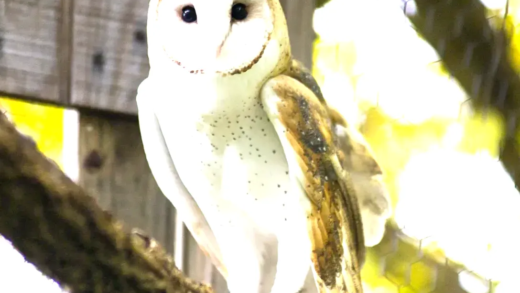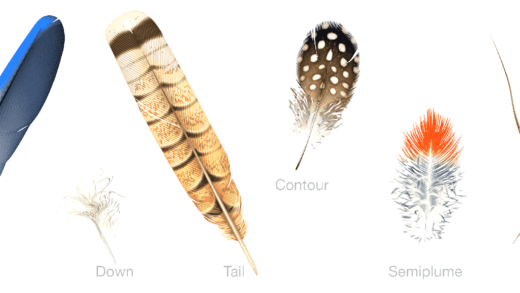Gharials face numerous threats, including habitat loss, declining fish stocks, and human-wildlife conflict. Conservation efforts are underway to protect this unique species, including breeding programs and community engagement. Success stories highlight the potential for recovery, and individuals can contribute by supporting conservation initiatives and raising awareness. Gharials possess fascinating traits, making them an essential part of the ecosystem.
What is a Gharial?
The gharial is a unique crocodilian species known for its distinct features. Primarily found in the rivers of the Indian subcontinent, this reptile is easily recognizable due to its long, narrow snout. The gharial’s snout is not just a quirky trait; it serves a crucial purpose in its feeding habits. Unlike other crocodilians, gharials are specialized fish-eaters, using their slender jaws to catch fish with remarkable agility.
With a body length that can reach up to 20 feet, gharials are one of the largest crocodilian species, yet their rarity is alarming. Once widespread, their population has dramatically declined due to habitat loss and human activities. Conservation efforts are crucial for their survival, as the gharial is now classified as critically endangered.
Key characteristics of the gharial include:
- Long, narrow snout adapted for catching fish.
- Distinctive physical appearance with a more elongated body compared to other crocodilians.
- Highly specialized diet focused primarily on aquatic prey.
Understanding the gharial’s unique traits is essential in appreciating this fascinating species and recognizing the need for conservation efforts.
Gharial vs Other Crocodilians
When comparing gharials with other crocodilians, several differences emerge in anatomy and behavior. While most crocodilians possess broad snouts designed for capturing a variety of prey, gharials have evolved to thrive primarily on fish. This specialization is evident in their feeding techniques, which differ significantly from their relatives, such as crocodiles and alligators.
Gharials lack the robust, powerful jaws typical of other crocodilians. Instead, their long, slender jaws allow them to snap up fish quickly and efficiently. In contrast, crocodiles use their strong bites to take down larger prey, which includes mammals and birds.
Additional differences include:
- Habitat preferences: Gharials prefer fast-flowing rivers, while other crocodilians can inhabit a variety of environments, including swamps and estuaries.
- Behavioral patterns: Gharials are generally more social than their relatives and are often seen basking in groups.
- Reproductive habits: Gharials build nests on riverbanks, while many crocodilians utilize different nesting strategies.
These distinctions highlight the gharial’s unique adaptations and underscore the importance of conserving this remarkable species.
The Gharial’s Narrow Snout
The gharial’s narrow snout is one of its most defining features, and it serves multiple purposes. This elongated jaw is specifically adapted for catching fish, allowing gharials to be highly efficient hunters in their aquatic environments. The shape of the snout minimizes water resistance as they swim, making it easier to pursue swift fish.
Additionally, the gharial’s narrow snout reduces competition for food with other crocodilians that prey on larger animals. By specializing in a diet of fish, gharials have carved out a niche that allows them to coexist with other crocodilians without direct competition.
Interestingly, the gharial’s snout also plays a role in communication. During mating season, males display a bulbous growth at the end of their snout, which can attract females and signal their readiness to breed. This unique adaptation not only aids in feeding but also enhances their reproductive success.
In summary, the gharial’s narrow snout is a prime example of evolutionary specialization, showcasing how anatomical features can influence behavior and survival in the wild.
Gharial’s Natural Habitat
The gharial thrives in specific natural habitats, primarily in the fast-flowing rivers of the Indian subcontinent. These rivers, such as the Ganges and Brahmaputra, provide the ideal environment for gharials due to their clean waters and abundant fish populations. Gharials prefer sandy banks and shallow waters where they can bask in the sun and hunt for food.
Key characteristics of their habitat include:
- Fast-flowing rivers with clear waters.
- Sandy or gravelly riverbanks for nesting and basking.
- Rich fish populations, crucial for their diet.
Unfortunately, the gharial’s habitat is increasingly threatened by human activities. Deforestation, pollution, and dam construction disrupt their natural environments, leading to a decline in suitable habitats. Protecting these vital river ecosystems is essential for the gharial’s survival.
Diet Differences
The gharial’s diet primarily consists of fish, which sets it apart from other crocodilians. While many crocodiles and alligators are opportunistic feeders, consuming a variety of prey including mammals and birds, gharials have adapted to be specialized piscivores. Their long, narrow snouts are perfectly designed for catching fish with minimal effort.
Notable aspects of the gharial’s diet include:
- Preference for small to medium-sized fish, which they catch using a quick snap of their jaws.
- Feeding techniques that involve ambush and speed, allowing them to catch agile fish.
- Minimal competition with other crocodilians due to their specialized diet.
This specialization not only highlights the gharial’s unique role in the ecosystem but also emphasizes the importance of maintaining healthy fish populations in their habitats.
Rarity of the Gharial
The gharial is considered rare due to several factors impacting its population. Once abundant, the gharial has faced dramatic declines in numbers, resulting in its classification as critically endangered. Key reasons for this rarity include:
- Habitat loss due to river damming, pollution, and human encroachment.
- Declining fish populations, which directly affects their food source.
- Human-wildlife conflict, as gharials are often viewed as threats to fishing activities.
Conservation efforts are crucial to combat these challenges and ensure the survival of the gharial. Recognizing the factors contributing to their rarity is the first step toward implementing effective protection strategies.
Current Challenges Facing Gharials
Gharials are facing numerous challenges that threaten their populations and survival. The primary threats include:
- Habitat Loss: Deforestation, dam construction, and river pollution have severely diminished their natural habitats. Many rivers that once supported gharial populations have been altered or destroyed, making it difficult for them to thrive.
- Declining Fish Stocks: Overfishing and habitat degradation have led to a significant decline in fish populations, which are the main food source for gharials. Without adequate food, gharials struggle to survive.
- Human-Wildlife Conflict: Gharials are often seen as a threat to local fishing activities. This perception can lead to conflict with humans, resulting in gharials being killed or removed from their habitats.
- Climate Change: Changes in climate patterns can affect river ecosystems, altering water levels and temperatures, which can further impact gharial populations.
Addressing these challenges is crucial for the survival of gharials and requires immediate attention from conservationists and local communities.
Conservation Initiatives for Gharials
Conservation efforts are underway to protect gharials and their habitats. Key initiatives include:
- Protected Areas: Establishing protected areas along rivers helps to safeguard gharial habitats. These areas restrict human activities that could harm gharials.
- Breeding Programs: Conservationists have initiated breeding programs to increase gharial populations. Captive breeding and subsequent release into the wild have shown promise in boosting numbers.
- Community Engagement: Engaging local communities in conservation efforts is essential. Educational programs that raise awareness about the importance of gharials can foster a supportive attitude toward their protection.
- Research and Monitoring: Ongoing research helps track gharial populations and understand their ecology better, informing conservation strategies.
These efforts are vital in ensuring the survival of gharials and restoring their populations in the wild.
Success Stories in Gharial Conservation
Despite the challenges, there have been notable successes in gharial conservation:
- Population Recovery: In some areas, conservation initiatives have led to small population recoveries, demonstrating that targeted efforts can yield positive results.
- Increased Awareness: Conservation campaigns have raised awareness about the plight of gharials, leading to increased public support for their protection.
- Community Involvement: Involving local communities in conservation efforts has resulted in more sustainable practices and a reduction in human-wildlife conflict.
These success stories illustrate the potential for effective conservation strategies to make a difference in gharial populations.
How You Can Help Gharials
Individuals can play a crucial role in gharial conservation by taking simple actions, such as:
- Support Conservation Organizations: Donating to or volunteering with organizations that focus on gharial conservation can help fund vital projects.
- Spread Awareness: Sharing information about gharials and their conservation needs can help raise awareness within your community.
- Practice Sustainable Fishing: If you fish, consider sustainable practices that protect fish populations and habitats.
- Reduce Pollution: Minimizing plastic use and waste can help keep river ecosystems cleaner, benefiting gharials and other wildlife.
Every small action contributes to the larger goal of protecting gharials and ensuring their survival.
Fun Facts About Gharials
Gharials are fascinating creatures with unique behaviors. Here are some fun facts:
- Gharials can hold their breath for up to two hours while hunting underwater.
- They are excellent swimmers, using their long, slender bodies and powerful tails to navigate swiftly through water.
- During mating season, males produce a distinctive sound by blowing bubbles through their snouts to attract females.
- Gharials can often be seen basking in the sun in groups, demonstrating their social behavior.
These intriguing traits make gharials a remarkable part of our planet’s biodiversity.





Comments are closed.